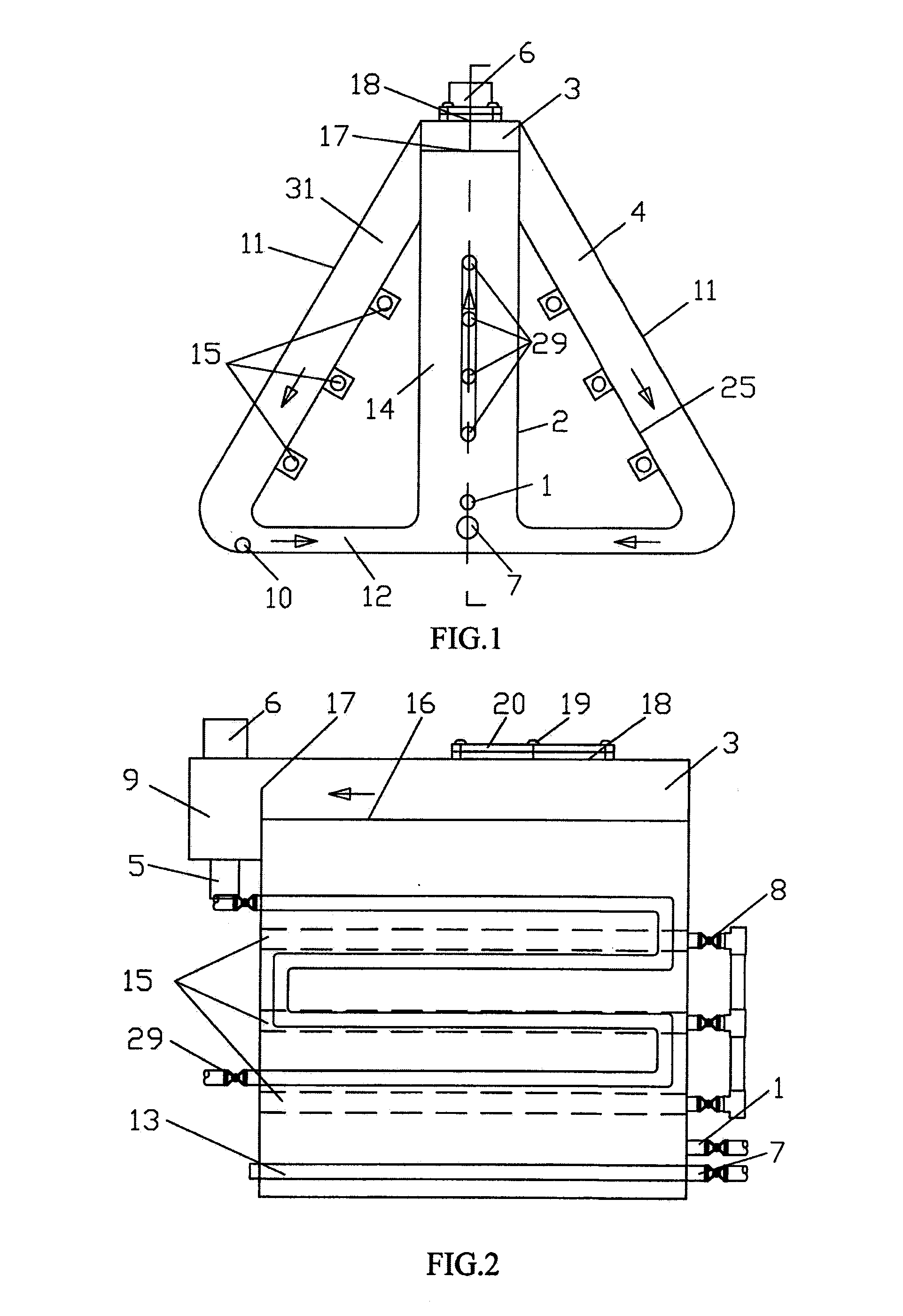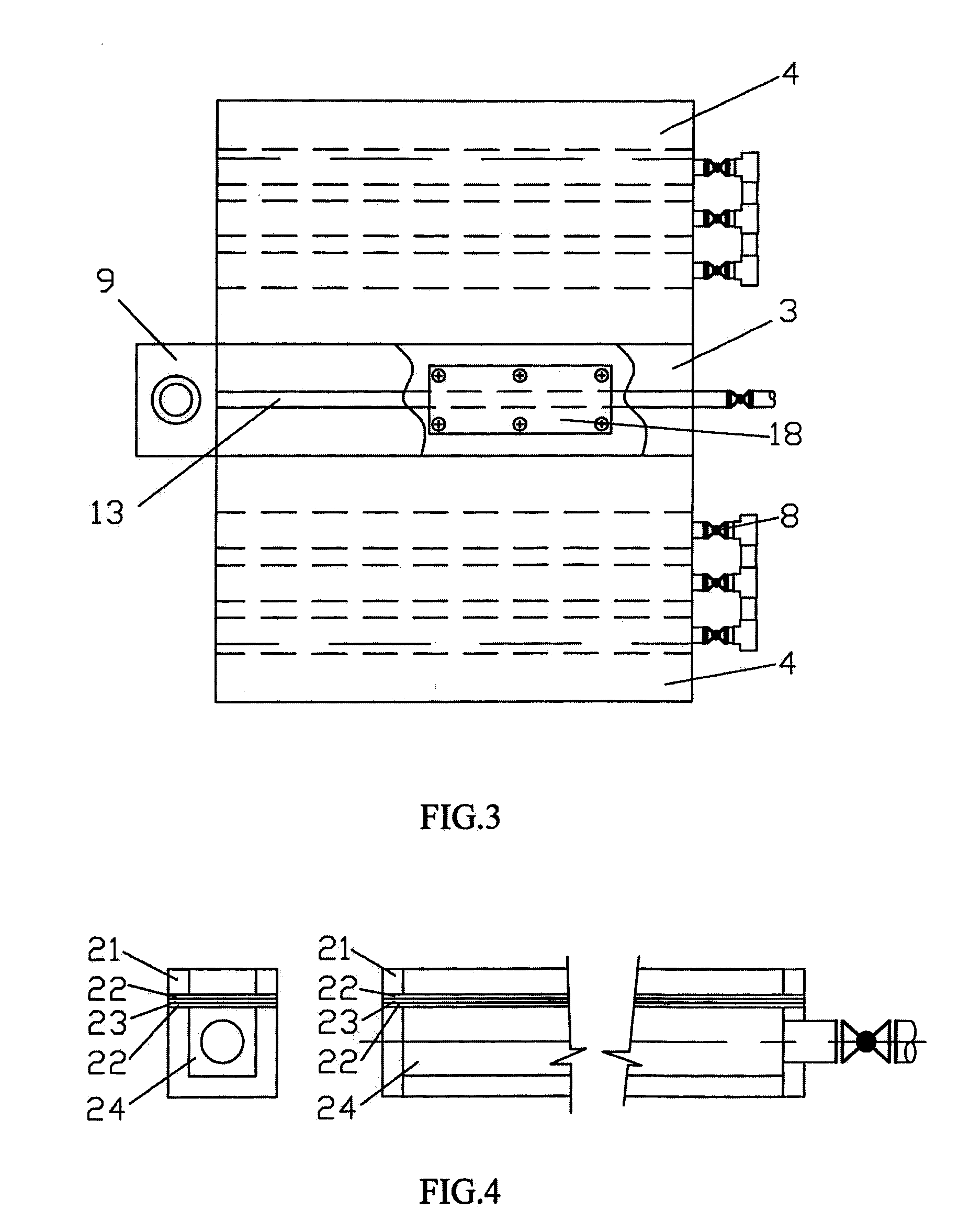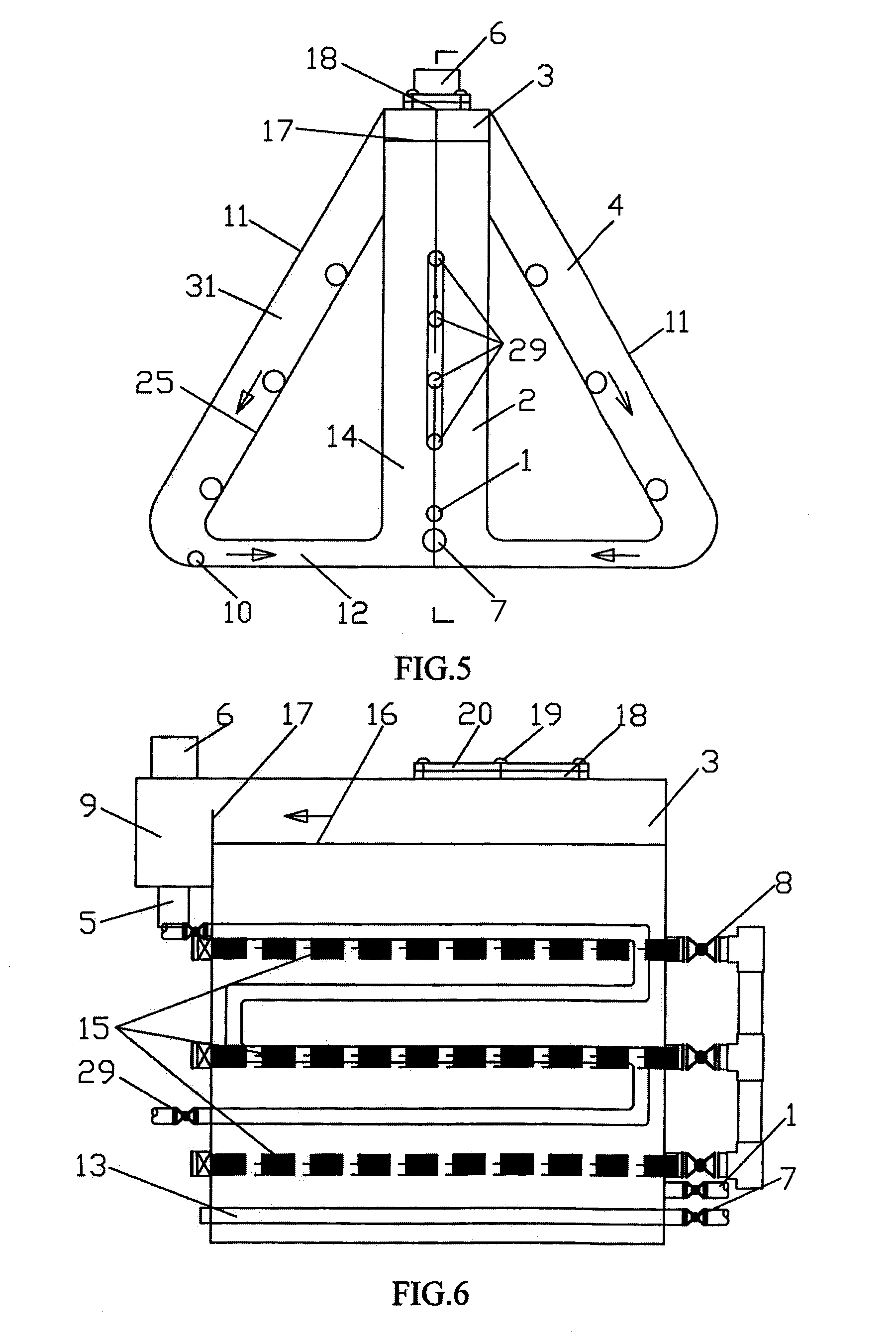Photobioreactor for carbon dioxide mitigation in wastewater treatment
a photobioreactor and wastewater treatment technology, applied in bioreactors/fermenters, biomass after-treatment, biochemical apparatus and processes, etc., can solve the problems of insufficient mixing, medium susceptible to airborne microorganisms and dust contamination, lack of temperature and light control, etc., to increase the usage efficiency of light energy by microalgae, the effect of large light specific area
- Summary
- Abstract
- Description
- Claims
- Application Information
AI Technical Summary
Benefits of technology
Problems solved by technology
Method used
Image
Examples
example 1
[0048]Operation Mode 1. Just as FIG. 1-3 show, the overall shape of the airlift circulation microalgae photoautotrophic-heterotrophic coupling photo-bioreactor for wastewater treatment carbon emission mitigation is a long ladder consisting of several trapezoid in line arrangement, including: feed pipe (1), microalgae heterotrophic zone (2), gas-liquid separation chamber (3), microalgae phototrophic zone (4), the bottom backflow zone (12) and liquid discharging zone (9). The arrows in the drawings of the reactor stand for the flow direction of the algal liquid.
[0049]Microalgae heterotrophic zone (2) in rectangular parallelepiped shape is the main reaction zone of microalgae heterotrophic growth utilizing the organic matter in the wastewater, which top connects with gas-liquid separation chamber (3) and which bottom connects with the bottom backflow zone (12). It includes feed pipe (1), air inlet pipe and flow control valve (7), air diffusion aerator (13), algal liquid lifting zone (1...
PUM
 Login to View More
Login to View More Abstract
Description
Claims
Application Information
 Login to View More
Login to View More - R&D
- Intellectual Property
- Life Sciences
- Materials
- Tech Scout
- Unparalleled Data Quality
- Higher Quality Content
- 60% Fewer Hallucinations
Browse by: Latest US Patents, China's latest patents, Technical Efficacy Thesaurus, Application Domain, Technology Topic, Popular Technical Reports.
© 2025 PatSnap. All rights reserved.Legal|Privacy policy|Modern Slavery Act Transparency Statement|Sitemap|About US| Contact US: help@patsnap.com



